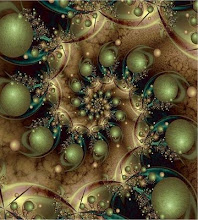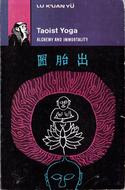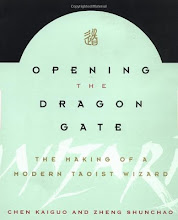Introduction
In the qigong science, the bigu-fasting is known from the profound antiquity in China as a method for additional purification of the body in order to make conditions for further development. It can be compared with a nice cleaning of a house.
In the system of qigong, the economy of energy - both physical and mental - is especially valued. In Chinese, the fasting is called bi gu, which literally means 'abstence from cereals'. It represents a complimentary method in the qigong system, in which the qigong practitioners achieve a state at which they are able to avoid eating cereals and solid food for certain periods of time (weeks, months, or years), while maintaining normal functions of daily life. By this, they clean the body and expel the turbid qi, in order to reach an advanced level.
An important characteristic of the bigu-fasting is that practitioner's overall condition improves rather than weakens. Before the fasting, a practical training is performed for accumulation of qi in the body and for mastering techniques for how to not damage the mind. The fasting always is preceded by a period of quantitative and qualitative development of the energy in the body through the practice of the qigong quiet exercise (meditation).
When the qigong teacher estimates that his students are ready enough, he takes them somewhere in the nature and determines an individual program for each of them, according to the level of their development. To the less advanced students, the professional qigong teacher determines a free menu, but without rice, wheat, oat, corn and other cereal products. The next level is a nutritional intake, that constists only of vegetables and/or fruits. Those, who have achieved a higher level of energy accumulation and development, are left only with wild fruits, and only on water. For the students of the highest level of evolution is set a complete abstence of food, and even without liquid intake. The length and degree of bigu-fasting is determined by a professional qigong teacher.
During the whole term, the students are consistently observed by their teacher and seriously practice the quiet exercise, in order to not experience hunger, mental discomforts and decrease of the vital forces. In this way, the bigu-fasting is treated as a complimentary method for purifying the body from long-time accumulated pathogens, mucus and pollutants, which to this moment the energy has not yet melt and transformed into useful qi or excreted from the body.
The scientific study of the state of bigu-fasting not only is helpful for the advance of the biological and medical research, but also has a certain practical meaning. It can purify and rejuvenate the body, improve the immune system, the energy and blood circlunation, and has an action of regulatory bilateral adjustment of the bodily functions. However, we should not forget that the deepest genuine purification of the body, the treatment of diseases and overall development comes only through the practice of the qigong quiet exercise (meditation).
In the spring of 1989, 20 researches at the Medical Research Institute in Beijing, under the direction of the renowned scientists Prof. Li Yushu, MD and Shen Zhan, conducted a strict scientific trial on bigu-fasting with a voluntarily implementation of low calorie intake of 2 qigong practitioners in the extension of 30 days.
Up to the present, this experment is regarded by the scientists circles in China as the most complete and strictly monitored scientific trial in this field of research. As Dr. Shen Zhan reported, "many qigong practitioners in China declare that they can do bigu-fasting or are currently in the process of bigu-fasting and wanted to participate in the experiment.
However, when they learned that this is to be a real scientific experiment with a very strict clinical observation, they all shrank back". Taking in consideration the above statement, it can be seen the serious objective attitude and strict scientific approach of the researchers toward this clinical trial.
Subjects
The subjects of the trial were divided into a bigu-fasting group and control group. The bigu-fasting group consisted of 2 subjects: 1. Xiao Ding, a 13 years old girl, who after hearing about qigong and bigu-fasting in 1987, gradually discontinued eating food and started bigu-fasting on her own, without the ability to control and stop it. 2. Wang Jianjun, a qigong scientist and practitioner, who was 32 years old and has practiced qigong more than 10 years at the time of the experiment, and who is the author of the present paper. Unlike Xiao Ding, he was able to control the state of bigu-fasting and could initiate or stop it at any time.
Method
During the experiment, the objects stayed at the Medical Research Institute to the Chinese Academy of Science in Beijing for 30 days. They were strictly monitored 24 hours a day by three clinical researchers who every minute independently recorded all types of physical activities of the subjects and estimated their daily calorie expenditure, according to the basal metabolism, physical activities and resting energy expenditure (REE) factors of their age, sex and weight. The researchers also completely recorded and estimated the nutritional values of all liquid and food intake of the subjects. On this basis, all other various medical observations have obtained a rich data and have gained a great interest of the medical researchers at the Institute.
Physiological data: physique examination, ECG, EEG, weight, basal metabolism rate (BMR), food intake and energy expenditure analysis.
Biochemical data: blood-cell analysis, blood serum, hemalbumin, urine analysis, stool analysis, blood pH, salivation, amylase activity, electrogastric activity, etc .
The examination of the daily nutrient and calorie intake represents a very important index in the study of bigu -fasting. During the clinical study period the subjects have been given only water, fruit juices and a minimal quantities of solid food (Chinese red jujubes), representing barely 0.3 - 0.6 % of the normal quantity of daily nutritional intake allowance.
Table 1. Nutrient and calorie intake (daily average rate) The daily calorie intake of the observed subjects was divided respectively into 300 kcal and 500 kcal, which is only 1/5 of the normal standard index for daily calorie intake.
The daily calorie intake of the observed subjects was divided respectively into 300 kcal and 500 kcal, which is only 1/5 of the normal standard index for daily calorie intake.
Results
The examination of the medical indexes shows that during the bigu-fasting trial, the subjects were in a state of negative metabolic balance. For the body tolerance to a long term negative nitrogen balance, the scientific data obtained from the two subjects has a very important value.
Table 2. Metabolic consumption and nitrogen balance
The scientific data also clearly indicates that although the two subjects have lived 30 days with a substantially low nutrient intake and a serious negative nitrogen balance, still there are no indicators that within their bodies have occurred organic impairment. The internal environment of the subjects has also maintained a relative homeostasis and normal blood flow indexes. The biochemicall data shows that blood pH, blood sugar, blood lipids, blood serum, the immunology points and the hematological index of the subjects were within the normal scope. Hemalbumin and metabolites were all normal, with a slight increase of creatine.
Table 3. Daily excretory amount
The biochemical study of the excretory amount of the observed subjects shows a substantial decrease of urinary and fecal discharge of nutrients.
 The clinical study of the energy metabolism and respiratory quotient rate of Xiao Ding and Wang Jianjun are notably lower than the control group of their sex and age. The basal metabolism rate (BMR) of Wang Jianjun falls from the normal 1.21 kcal to 0.38 kcal, and in Xiao Ding - from 0.48 kcal to 0.14- - 0.21. It is understandable that by decreasing the metabolism rate, the body could save energy. Similarly, in the state of sitting relaxation the respiratory quotient of the subjects decreases approximately by 40%. The process of RQ decrease is carried out along with a mobilization of triacy glycerols from the fat depots, which can stimulate the transformation of body fat into glycogens - an energy that is more convenient for use by the body.
The clinical study of the energy metabolism and respiratory quotient rate of Xiao Ding and Wang Jianjun are notably lower than the control group of their sex and age. The basal metabolism rate (BMR) of Wang Jianjun falls from the normal 1.21 kcal to 0.38 kcal, and in Xiao Ding - from 0.48 kcal to 0.14- - 0.21. It is understandable that by decreasing the metabolism rate, the body could save energy. Similarly, in the state of sitting relaxation the respiratory quotient of the subjects decreases approximately by 40%. The process of RQ decrease is carried out along with a mobilization of triacy glycerols from the fat depots, which can stimulate the transformation of body fat into glycogens - an energy that is more convenient for use by the body. Table 5. Salivation amount and amylase activity after two weeks of bigu -fasting
The electrogastric activity (EGA) amplitude of Xiao Ding and Wang Jianjun in the state of laying relaxation are notably lower than the indexes of the control group. Several seconds after intaking a definite amount of liquids, the electrogastric activity amplitude of the control group highly increased, while Wang Jianjun and Xiao Ding's reaction to this kind of stress was relatively weak. The constrainment of the electrogastric activity amplitude clearly shows the change of the disusability of the stomach, created by the bigu-fasting.
During the clinical observation period, Xiao Ding repeatedly developed strong positive ketonuria with a very high numerical value of the ketone bodies. Wang Jianjun also showed high ketonuria in the first three days of the experiment. When there was a very low amount of calorie and liquid intake, the ketonuria appeared; as soon as there was an increased supply of calorie and liquid intake, the ketonuria disappeared immediately. Taking into account that Xiao Ding and Wang Jianjun were, on the whole, in a good state and stable homeostasis, this type of ketonuria caused by low nutrient intake not necessarily represents a morbid condition, but is actually a natural outcome of a major mobilization of the bodily fat. In the absence of dietary sugar, there is a great utilization of fat for energy. The ketonuria effect of prolonged bigu-fasting is encountered in such diseases as diabetes mellitus where glucose cannot be properly utilized for energy purposes. Yet it is different from the ketosis as seen in diabetes mellitus.
During the 30-day clinical observation period of the trial, Xiao Ding lost 4,4 kg and Wang Jianjun -- 5.5 kg. The weight decrease actual measured value of the subjects is much lower than the normal energy and substance metabolism calculated formula of the bodily weight decrease expected value. Only after deducting the portion made up by the dehydration, could be determined the actual value of the bodily depletion. That is why, the bodily depletion of the observed group in fact is not as serious as it seems. This is also helpful to understand the stability of their homeostasis and state of physical and mental well-being. The observed subjects were able to follow their usual daily activities without any presence of discomfort or fatigue.
After completing the clinical study, both Xiao Ding and Wang Jianjun have actively participated in their everyday life activities, without a record of getting ill. Their body weight is stable and they enjoy a normal physiological and spiritual life.
Discussion
From the point of view of the physiological health, the bigu-fasting is applied as a natural method of therapy, but it should not be applied in cases of children and adults with weak constitution. The former, as it is known, are in a period of intense growth, when every shortage of nutrients may lead to consequences in one or another ways; the latter - the people with qi insufficiency and weakened by prolonged diseases organism, as a result of the fasting their energy may deplete to very low levels, even if there might occur some improvements in the physiological state. That is why, in cases with children and adults with weak constitution, the Chinese medicine proposes other natural ways of treatment - for example through the choice of special diet, which also has a healing effect, through herbal therapy, massage, qigong practice and therapy, and others.
There exist many specific ways and levels of this method. It is very important that the extent and duration of fasting should be determined by specialized physicians. It is never applied drastically.
It should be clear that through bigu-fasting the energy cannot be developed, but only are created conditions for its better circulation and work.















No hay comentarios:
Publicar un comentario